Welcome to the epitome of regal elegance in the heart of Kochi – Mattancherry Palace.
However, this architectural marvel stands as a testament to Kerala’s rich history and cultural heritage. Additionally, commissioned by the Portuguese and refurbished by the Dutch, the Palace, affectionately known as the Dutch Palace, boasts intricate craftsmanship and breathtaking mural paintings narrating tales of bygone eras.
Further, each corner of the Palace echoes the grandeur of the Kingdom of Kochi, offering visitors a glimpse into the opulent lifestyle of its rulers. Visiting the Palace is an absolute must for those seeking to immerse themselves in the splendor of Kerala’s past.
1. Mattancherry Palace History

However, constructed in 1555 by the Portuguese as compensation for demolishing a temple, Mattancherry Palace, also known as the Dutch Palace, boasts a rich history intertwined with colonial rule. Renovated by the Dutch in 1663, this architectural gem transformed, earning its Dutch moniker.
Additionally, through colonial powers, the Palace eventually fell under the sway of the British East India Company. Despite its tumultuous past, the Palace is today a testament to cultural amalgamation, adorned with exquisite Hindu temple art.
The interior Mattancherry palace showcases mural paintings, hailed as some of the nation’s finest, depicting vibrant scenes from mythology. Additionally, a portrait gallery immortalizes the lineage of the Cochin Kings, offering a glimpse into the region’s regal heritage. Palace remains a captivating landmark, narrating tales of bygone eras with every brushstroke and architectural flourish.
2. Dutch Palace/Mattancherry Palace Architecture
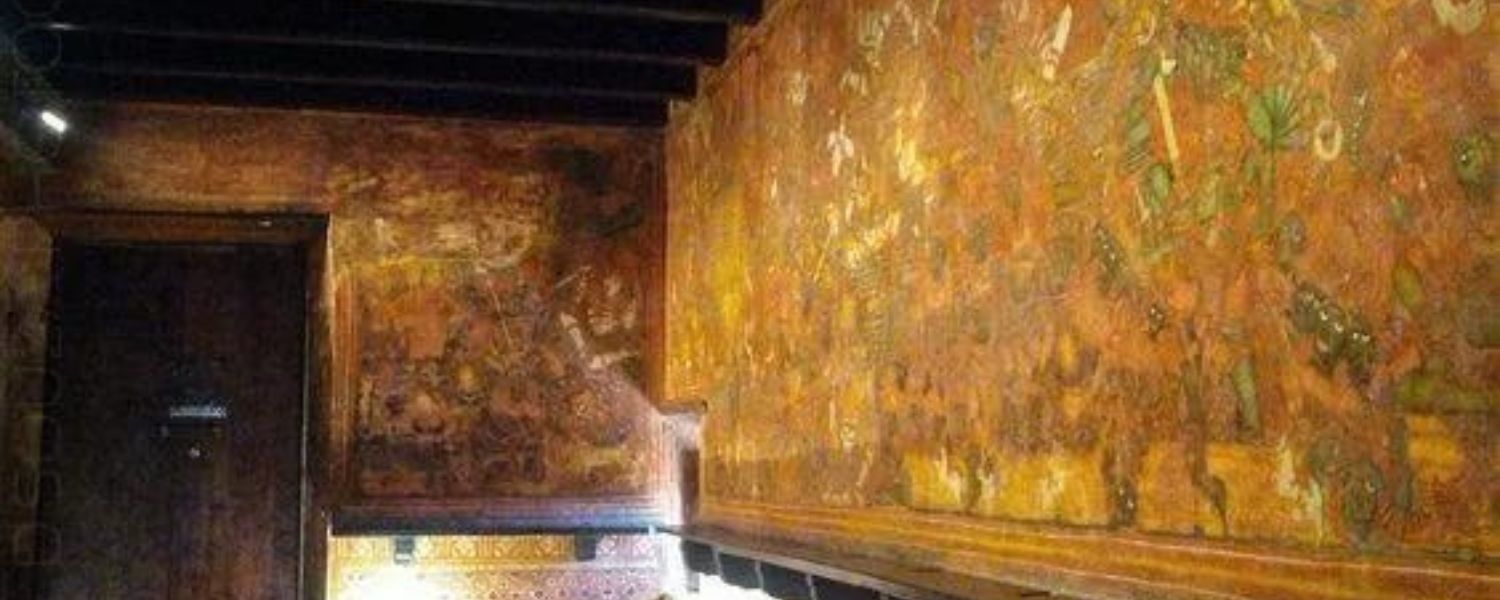
Situated in the heart of Kochi, the illustrious Mattancherry Palace, also called the Dutch Palace, stands as the architectural heritage of Kerala. Further, the Palace, boasting two Mattancherry palace floor, embodies the traditional Nalukettu style, characterized by a sprawling courtyard.
Within this courtyard lies a small temple dedicated to Goddess “Pazayannur Bhagavathy,” revered as the family deity of the Kochi Kingdom. Additionally, flanking the Palace are two additional temples paying homage to Lord Krishna and Lord Shiva.
What sets this architectural marvel apart is its intriguing blend of Kerala’s traditional style with subtle European influences, evident in various structural elements.
However, is the Palace’s flooring, which captivates with its polished black marble appearance, achieved through a unique concoction of charcoal, lime, burnt coconut shells, plant juices, and egg whites. Moreover, palace truly stands as a testament to its creators’ cultural fusion and artistic finesse, and you can explore famous cities in Kerala.
3. The paintings inside the Palace
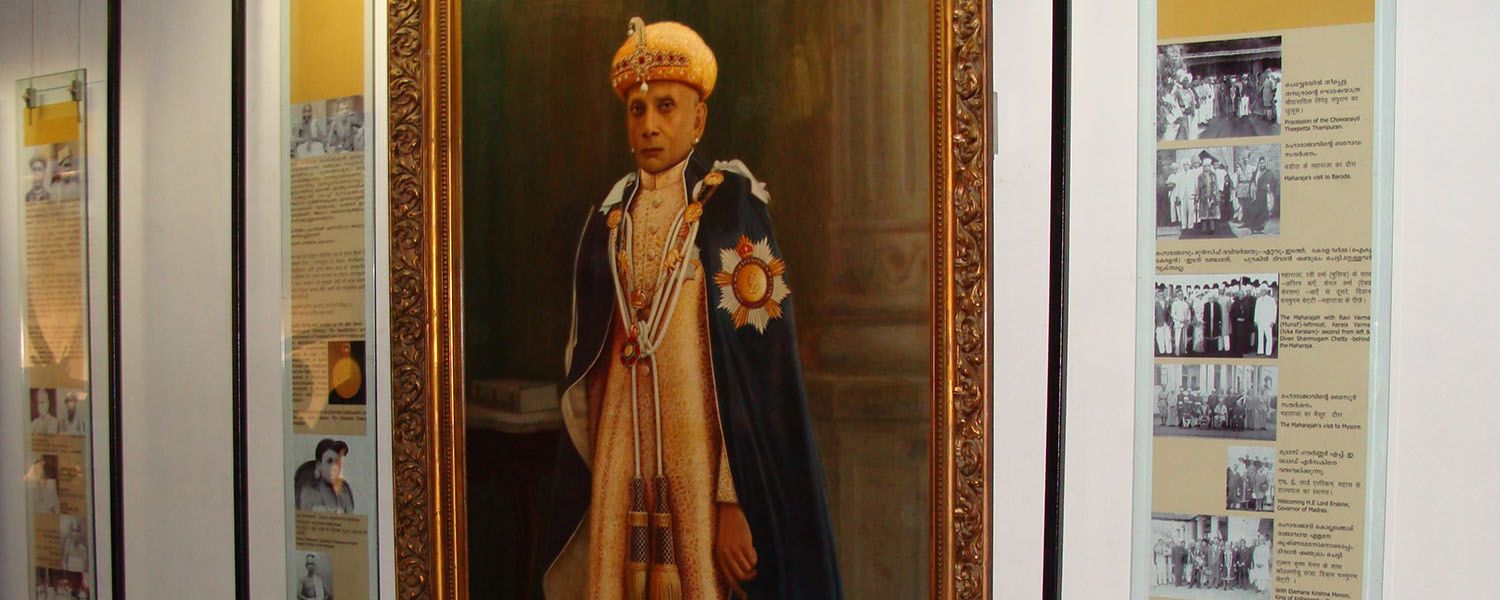
Mattancherry Palace, where the walls and ceilings narrate tales of Mattancherry palace timings elegance and cultural richness through intricate mural paintings.
Further, adorned with the finesse of Hindu Temple Art, the Palace serves as a sanctuary of artistic mastery. The coronation hall welcomes visitors onto the upper floor, boasting mesmerizing depictions of divinity.
The focal point lies in the captivating Mattancherry palace murals of Goddess Lakshmi and Lord Vishnu (Ananthasayanamurthy), alongside the ethereal portrayal of ‘Ardhanareeshwara’—the divine union of Lord Shiva and Goddess Parvati.
Moreover, each stroke unveils a saga of reverence and grandeur, offering an immersive journey into the heritage of Mattancherry Palace.
4. Mattancherry Palace Entry Fee and Timings
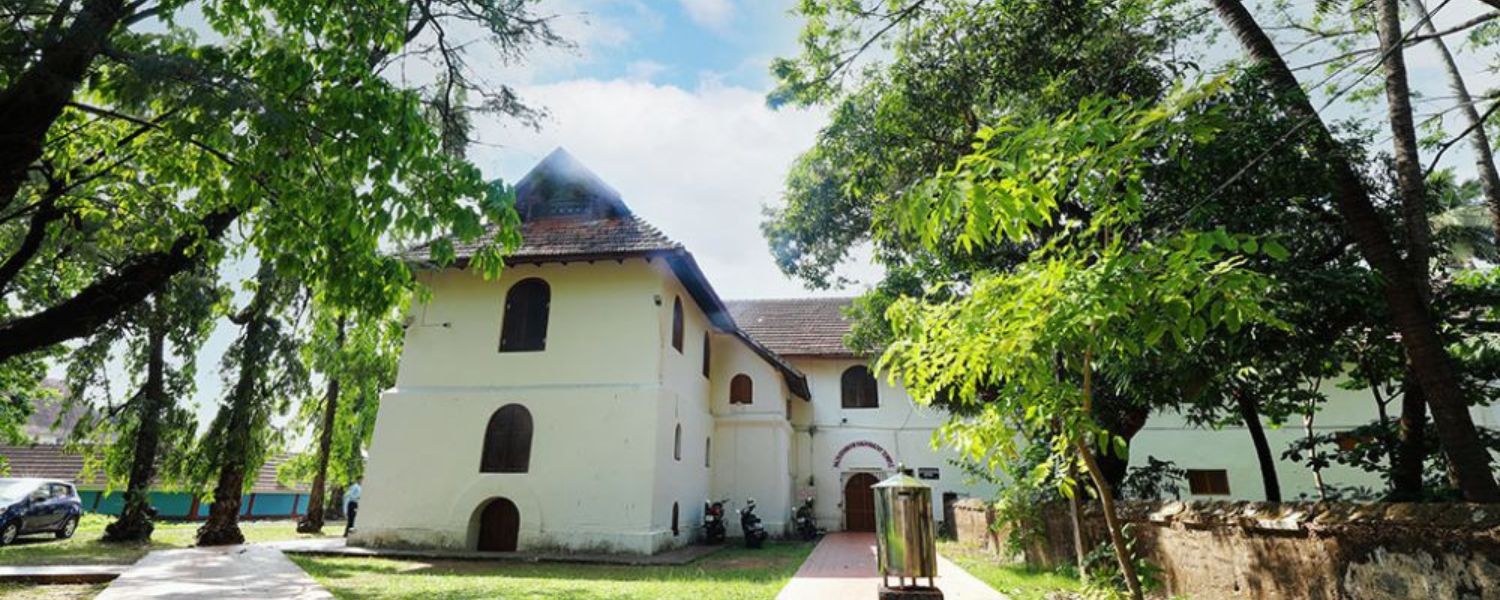
Operating on a schedule that caters to both morning and afternoon visitors, the Palace welcomes explorers from 9:45 am to 1:00 pm and then again from 2:00 pm to 4:45 pm every day except Fridays and Saturdays.
Additionally, seamlessly into affordability, the Mattancherry Palace entry fee for adults is a mere 2 rupees, making it accessible to all. Moreover, there’s a generous exemption for young enthusiasts under 15 who enjoy free entry and exploring Kerala beach no waves.
5. Architecture
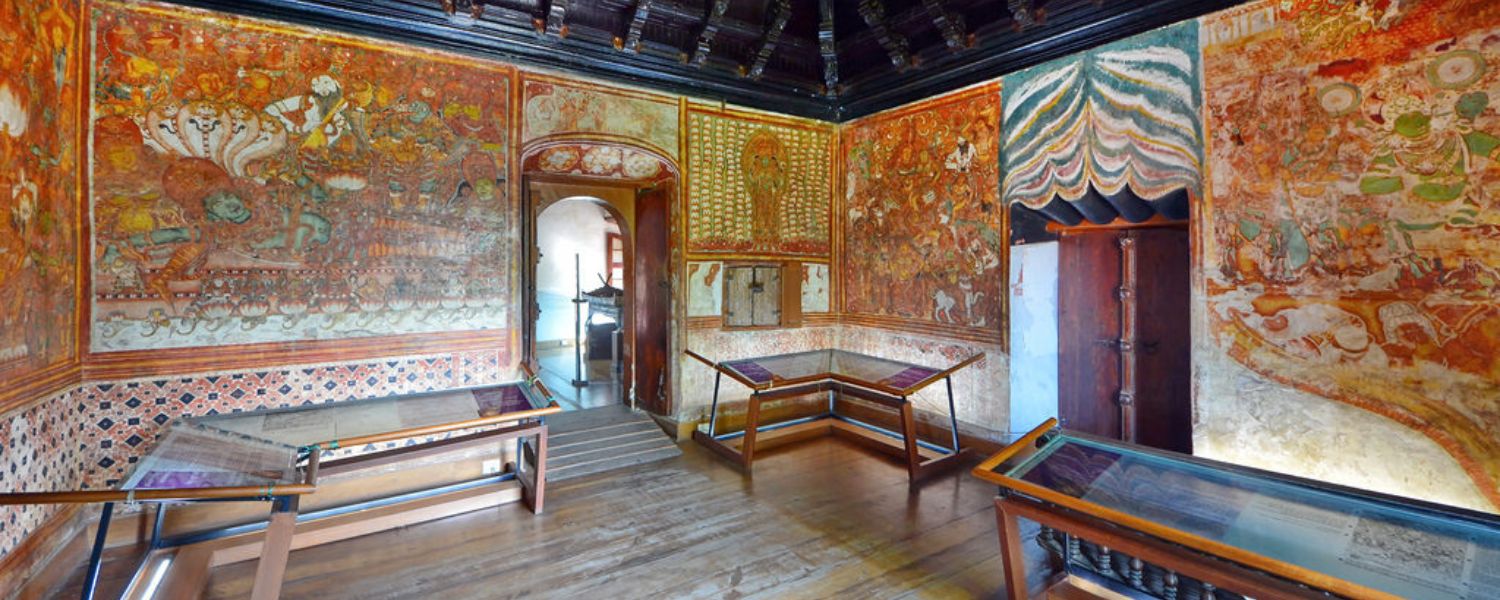
This iconic tower is a testament to the fusion of cultures, blending traditional Kerala Nālukettu style with distinct European influences. Embracing a quadrangular design, the Palace boasts a central courtyard, typical of Nālukettu architecture.
Notably, its arches and chamber proportions bear the hallmark of European design elements seamlessly integrated into the indigenous structure. This synthesis creates a unique aesthetic, captivating visitors with its Mattancherry palace history significance and architectural grandeur.
Mattancherry palace Kochi embodies the rich tapestry of cultural exchange and architectural innovation.
6. Murals
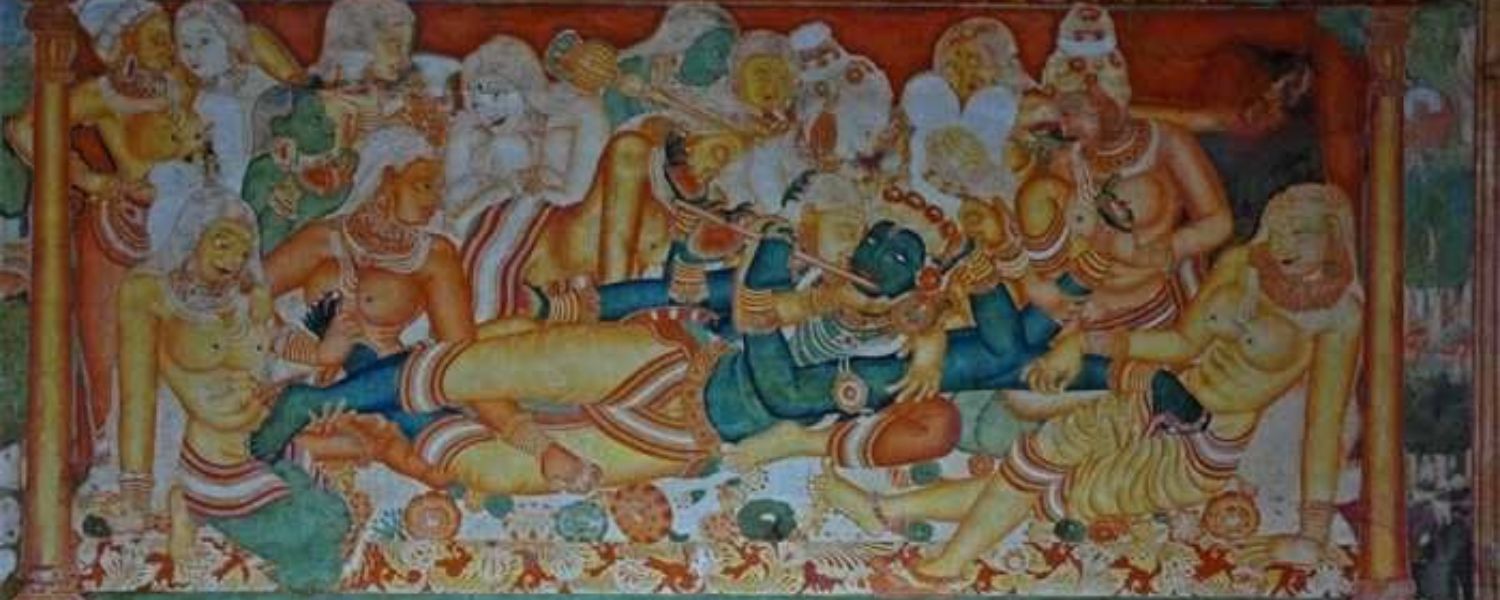
Visitors to Mattancherry Palace are greeted with a visual feast of vibrant murals adorning its walls. These intricate artworks, steeped in the heritage of Hindu temple art, serve as captivating windows into the past.
Rendered in the traditional tempera technique, these Mattancherry murals boast a symphony of rich, warm hues that effortlessly transport viewers to another era. These religious and decorative masterpieces offer a stylized narrative that enchants all who behold them.
7. Other exhibits
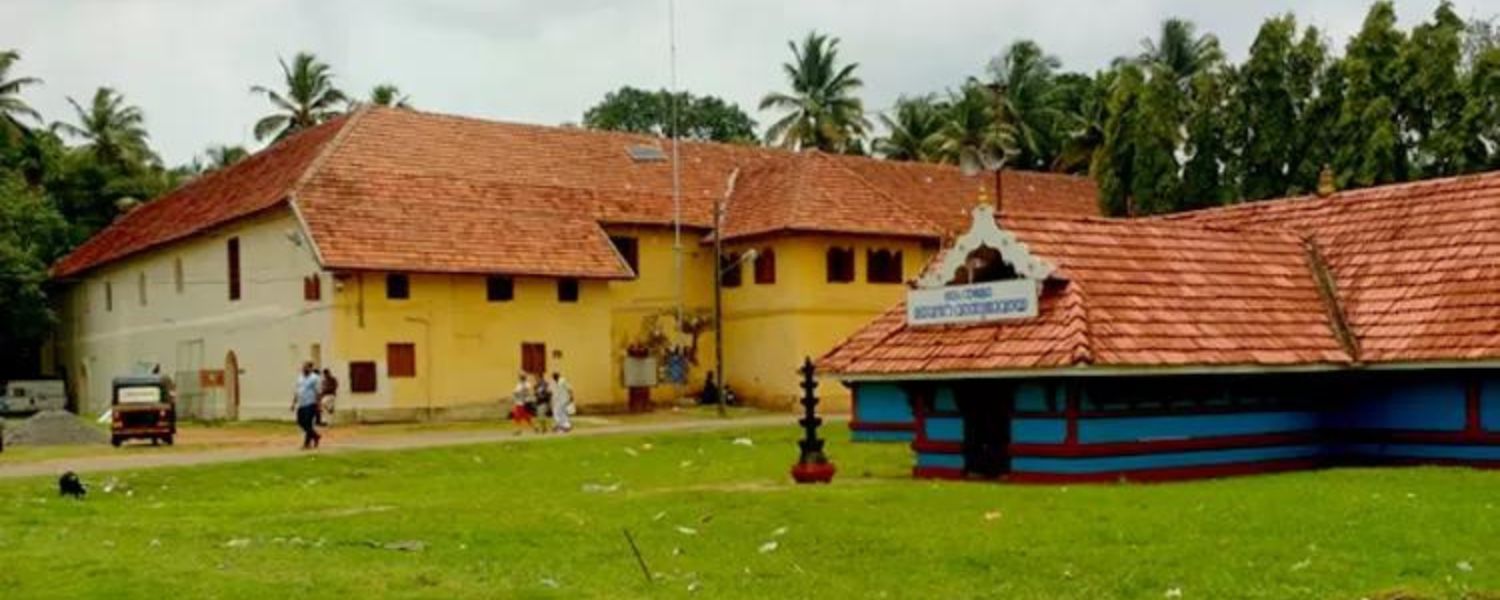
Step into what was once the Coronation Hall and behold the illustrious line of Rajas of Cochin, depicted in portraits dating back to 1864. Crafted by local artists in the Western style, these portraits stand as timeless reflections of regal grandeur.
Furthermore, seamlessly, the hall’s ornate wooden ceiling adorned with intricate floral designs elevates the ambiance. Beyond the portraits, discover a captivating array of artifacts, including an ivory palanquin, a majestic howdah, and royal umbrellas.
The Palace also houses ceremonial attire worn by royalty, alongside a fascinating collection of coins, stamps, and intricate drawings. Explore the legacy of Cochin’s rulers through the diverse exhibits of the Palace.
8. Restoration

The restoration of the Mattancherry Palace holds significant historical importance. Initially commissioned in 1555 by the Portuguese, this architectural marvel underwent a thorough restoration in 1951, making it a central government-protected monument.
Fast forward to the present, the Archaeological Survey of India embarked on a second phase of restoration, commencing in 2007 and concluding successfully by 2009.
This meticulous endeavor aimed to preserve the Palace’s grandeur and safeguard its rich cultural heritage for future generations. The painstaking restoration process underscores the enduring commitment to preserving and celebrating the legacy of the Palace.
9. How to reach

When planning your visit to Mattancherry Palace, accessibility is critical. Cochin International Airport is the closest central hub for air travel, approximately 42 kilometers away.
If you prefer railways, Ernakulam hosts the nearest station, 10 kilometers from the destination. From Ernakulam Junction, Ernakulam Town, or Cochin Harbor Terminus, taxis offer seamless transit.
The KSRTC Central Bus Station, adjacent to Ernakulam Junction Railway Station, provides convenient access. Ensuring a seamless travel experience, the Palace awaits, promising a glimpse into Kerala’s rich history and architectural marvels.
10. Interesting facts

The heart of Cochin lies the illustrious Mattancherry Palace, a timeless testament to Kerala’s rich cultural heritage. Renovated and accorded national monument status in 1951, the Palace blends colonial and traditional Kerala architectural styles.
What truly sets this architectural marvel apart is its symbolic embrace of religious diversity, as evidenced by its shared walls with a royal patronage temple and a Jewish synagogue.
Step inside, and you’ll immerse yourself in a history and opulence treasure trove. Every corner whispers tales of a bygone era, from meticulously preserved Dutch maps to ornate royal palanquins and ceremonial swords. Additionally, its stunning murals, over 100 square meters, vividly depict Hindu mythology and the legendary Ramayana epic with unparalleled artistry.
Conclusion
In conclusion, Mattancherry Palace is a timeless marvel, showcasing the rich tapestry of Kerala’s cultural heritage. With its origins dating back to the Portuguese era and subsequent Dutch renovations, this gem seamlessly blends colonial influences with traditional Kerala architecture.
However, its captivating murals, ornate chambers, and symbolic central courtyard transport visitors to a bygone era of regal grandeur and artistic finesse.
Restored with meticulous care by the Archaeological Survey of India, the Palace remains a beacon of historical significance, inviting travelers to delve into its captivating history and immerse themselves in the splendor of Kerala’s past.
FAQ
Q. Why is Mattancherry Palace famous?
A. Mattancherry Palace is renowned for its expansive halls, captivating murals, and a charming central courtyard. Housing the royal family’s deity, Pazhayannur Bhagavathy stands as the architectural brilliance of its time.
Q. What is the story of the Dutch Palace?
A. Originally a gift from the Portuguese to King Veera Kerala Varma, the Palace earned its moniker, Dutch Palace, due to subsequent enhancements made by the Dutch. It remains a significant landmark, steeped in history and culture.
Q. How much is the ferry from Ernakulam to Mattancherry?
A. However, the ferry fare from Ernakulam to Mattancherry ranges from ₹120 to ₹170 for a scenic 17-minute journey, offering affordable and delightful transportation.
Q. Which is the most beautiful Palace in Kerala?
A. While Mattancherry Palace boasts remarkable beauty, Kowdiar Palace, constructed in 1934, is a splendid testament to Kerala’s royal architecture, capturing hearts with its exquisite design and grandeur.










